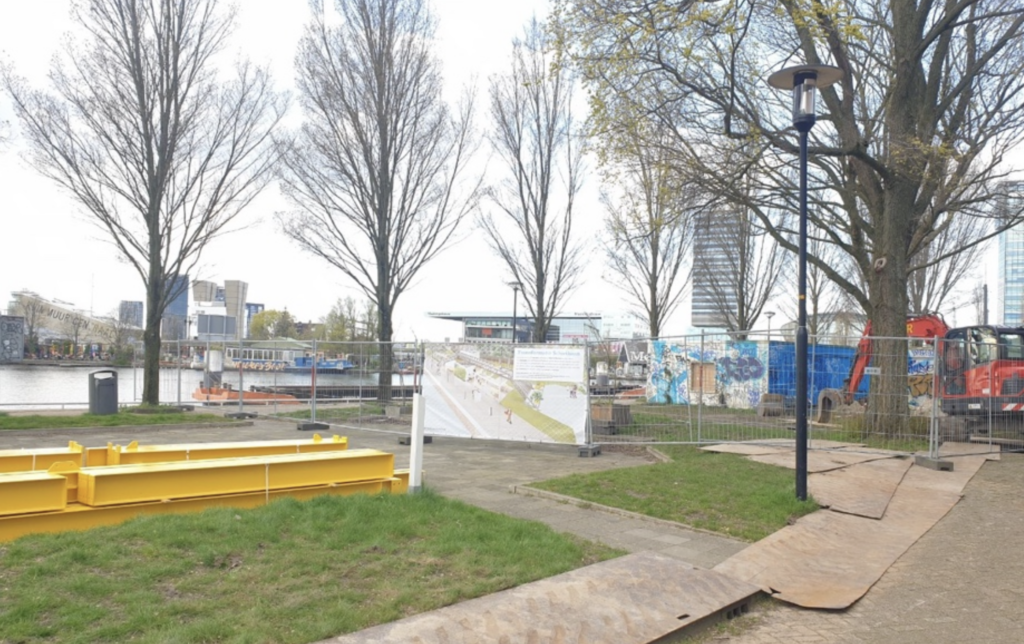NEB ambition
The ultimate ambition of the New European Bauhaus is to achieve transformation. To do this, the NEB Compass has identified specific levels of ambition that outline the desired outcomes for each of the NEB values.
The ultimate ambition of the New European Bauhaus is to achieve transformation. To do this, the NEB Compass has identified specific levels of ambition that outline the desired outcomes for each of the NEB values.
These areas refer to the five key domains of intervention that CrAFt's New European Bauhaus Impact Model considers essential for guiding and evaluating complex urban initiatives.
The participation level refers to the degree or extent to which individuals or groups are actively involved or engaged in a particular activity, project, or process. It assesses the depth of their involvement, contributions, and commitment, ranging from minimal or passive participation to active and dedicated participation.
The New European Bauhaus (NEB) aims to promote the values of sustainability, aesthetics, and inclusion in the design and transformation of urban spaces. It emphasises the integration of environmental, social, and economic considerations to create harmonious and innovative living environments.
According to the Smart City Guidance Package, there are seven stages to plan and implement smart city projects. These stages propose a logical and coherent roadmap for city initiatives involving many stakeholders.
In the heart of Amsterdam, where history and innovation converge, the Marineterrein is undergoing a remarkable transformation. Once a closed military area, it is now evolving into a dynamic city quarter, embracing the principles of co-creation and open innovation. The metamorphosis involves the development of a future-proof urban district featuring flexible workspaces, unique housing, sports facilities, recreational spaces, and greenery.
At the core of this evolution lies the concept of the living lab, where the Marineterrein becomes a testing ground for inventing, testing and applying scalable innovations to address pressing urban challenges. The Amsterdam University of Applied Sciences (AUAS) is actively participating in this project through various research activities, contributing to the Marineterrein Amsterdam Living Lab (MALL) under the umbrella of Campus Amsterdam.
A notable aspect of this redevelopment initiative is the early integration of culture and creative industries, shaping the identity of the emerging urban space. This previously successful approach to transforming the Westergasterrein is now being scaled up in the Marineterrein. The Schietbaan (former shooting range) stands as a testament to this strategy, evolving into a space for arts and culture to contemplate the interaction between humanity and nature.

The Schietbaan’s journey represents more than just architectural rejuvenation. It serves as a case study for reactivating challenging heritage buildings through cultural programming, imbuing sustainability by incorporating features like a recycled photovoltaic roof and converting parking spots into green spaces. The overarching goal is not just to revitalise a single building but to make all temporary structures sustainable, fostering societal solutions and innovations that transcend borders.
However, the project encounters governance challenges, particularly evident in the Schietbaan story. The key takeaway is the importance of a gradual, step-by-step approach. Crafting a vision collaboratively with the community, utilising arts and culture, and adapting the plan as needed are vital components. Flexibility is crucial when working with diverse stakeholders with different timeframes and perspectives.
Yet, the path to transformation is not without obstacles. Aligning with numerous actors while navigating financial, legal, and regulatory complexities can be daunting. The bureaucratic process of obtaining permits often becomes a bottleneck, slowing down progress. Additionally, communicating the intricacies of the situation to citizens is essential, involving them in the complex yet exciting process of shaping the area’s future.
In essence, the Marineterrein project is not just about physical redevelopment; it is a journey of continuous learning, collaboration, and adaptability. It exemplifies how a community can influence societal transitions, providing a valuable model for future developments within the city and other regions across Europe.
Website: marineterrein.nl